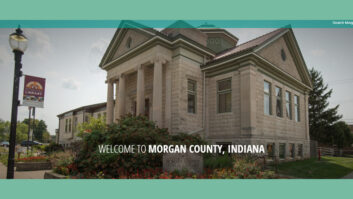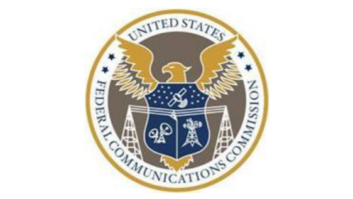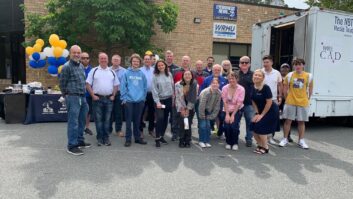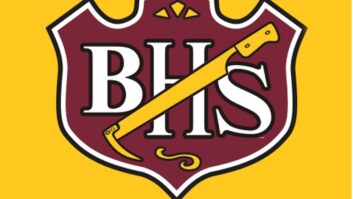
Fig. 1: A page from the author’s SWL Logbook from 1992 showing the date, time, frequency and partial transcript of a numbers station transmission. In the early 1990s, at the end of the Cold War and before the onset of the Internet Age, you could tune across the shortwave bands and hear the monotonous drone of an automated woman’s voice calling out long strings of numbers in Spanish. “Siete — Quatro — Cinqo — Cinqo — Cinqo,” the voice would say, pause, and then switch to a new set of numbers.
These transmissions, which had started at the end of the Second World War, weren’t always in Spanish, nor were they always female. Other languages were used to broadcast entire strings of numbers, which many believed made up a coded message that could be heard by anyone with a shortwave radio. The consensus view at the time was they were meant for secret agents operating in foreign countries.
“We don’t know for sure what types of agents these messages are being sent to,” veteran numbers monitor Chris Smolinski told Radio World via email. ”We also don’t know for sure how the messages are encoded, although we have some theories.”
Those theories include the use of “one-time pad” encryption. The one-time pad system is almost impossible to crack. It uses a random key or “pad” to create a cipher text and, once encrypted, the resulting numbers, letters or bits can be transmitted through virtually any media and only deciphered by someone with a matching key pad. Destruction of the key after each use ensures total secrecy.
THE DEDICATED LISTENERS
Today, with the Internet Age fully mature and the Cold War buried under 20 years of modern history, the numbers are still being transmitted.
“The number of stations decreased rapidly after 1990. The British stopped in 2009 and the Israeli’s in 2011. At least they stopped using voice transmissions,” Ary Boender writes.
Boender, who lives in the Netherlands, has monitored and documented shortwave numbers stations since 1982. An avid member of the monitoring community, Boender publishes “Numbers and Oddities,” a monthly newsletter that lists loggings of shortwave utility stations. He says the reason the numbers are still broadcast might have a simple answer.
“The best thing about high frequency (HF) transmissions is that you cannot trace them and you can hear them with a simple portable radio.”
Since the numbers are still being transmitted, dedicated radio hobbyists continue to monitor and report on them.

Fig. 2: A one-time-pad discovered by Detlev Vreisleben after the end of the Cold War. These pads were used to encrypt and decipher numbers station messages.
Credit: Courtesy Detlev Vreisleben Chris Smolinski has been listening to shortwave radio and monitoring numbers stations since the late 1970s. He maintains www.spynumbers.com and an e-mail list known as “Spooks,” both of which track and report loggings of numbers stations. He says he doesn’t know exactly how many people are listening.
“I suspect it is in the low thousands at best, with probably very low hundreds for the number of dedicated listeners versus those who just occasionally tune in.”
THE STATIONS
During the spy numbers heyday there were dozens of stations operating from various parts of the world. Many were based in Europe, but there were also stations suspected to be based in Asia, Cuba and even in the United States of America.
Many of these stations had developed nicknames within official military or intelligence organizations and those names often made their way into the hobby lexicon of the day.
“Names were invented by individual listeners, or the military,” Boender said. “Bulgarian Betty, for example, was the nickname that was used by the U.S. military in Germany.”
Other nicknames for stations derived from pieces of music that played prior to the actual message or from characteristics of the audio that was transmitted. These included the “The Lincolnshire Poacher,” “Swedish Rhapsody” or “The Babbler.”
To help sort through the different stations and to bring some level of coordination to the listening community, a group of European listeners started naming and classifying each station.
“The original ENIGMA group invented the classifications,” Boender said. “The current group ENIGMA 2000 continues this process.”

Fig. 3: A communication tower at the Warrenton Training Center facility in Virginia.
Credit: Courtesy of the Federation of American Scientists The results were published in the “ENIGMA Control List” which is still the primary defining document for tracking and reporting these stations among hobbyists. ENIGMA’s classification system divided the languages into four rough groups: E for English, G for German, S for Slavic and V for Various.
Then they assigned a sequential number for each unique style of transmission.
The Spanish-language female voice station became known as “Attenćion,” due to its repeated use of that phrase at the beginning of each transmission. Using their classification system, they identified it officially as station V02.
Boender, who was a member of ENIGMA, says the listening community has had a big influence on understanding the origin and intent of these stations.
“Most of what we know comes from listening, sharing details of the transmission and schedules, direction finding activities and analyzing all the stuff that is available,” he said.
The V02 “Attenćion” station is believed to be Cuban in origin. Smolinski says this conclusion is based on careful observation by hobbyists who occasionally catch stations broadcasting anomalies, “which the Cuban spy numbers stations are infamous for,” Smolinski said. “Such as accidentally playing Radio Havana audio mixed in with the spy numbers transmissions.”
Hobbyists say the phenomenon of numbers stations isn’t limited to foreign intelligence agencies. ENIGMA designate E05, for example, a station that used to broadcast a female voice reciting groups of numbers in English, was last heard in 2003 and was believed to be a CIA funded and operated station.
Dubbed “Cynthia,” this station, hobbyists suspect, operated out of the Warrenton Training Center in Virgina.
MESSAGE RECEIVED
While the hobbyists who monitor these transmissions have always suspected that they were listening to coded spy messages, to date, no government has officially acknowledged their existence — something Boender and Smolinsky would both like to see.

Fig. 5: Google Earth view of the supposed antennas for V02a/HM01, the Cuban numbers station that is still active.
Credit: Courtesy Ary Boender
“A confirmation would be nice. The fact is that several Russian and Cuban spies were caught red-handed while listening to the numbers transmissions,” Boender said, referring to the cases of Ana Belan Montes and Andreas and Heidrun Anschlag.
Montes, a Cuban spy who worked for the U.S. Defense Intelligence Agency, was convicted of espionage in 2002. She had been passing secrets to Cuba for more than 20 years when she was caught. When agents searched her apartment, they found a small shortwave radio and a piece of paper containing a matrix of numbers and letters that they believe was used as a deciphering pad.
The Anschlag case is more recent. In 2011 Andreas and Heidrun Anschlag, who had been living in West Germany for more than 20 years under assumed identities, were arrested. According to media reports, when a Special Forces commando stormed the Anschlag’s house he caught Heidrun in the act of receiving a coded message on a shortwave radio.
NASB NOT CONCERNED
The National Association of Shortwave Broadcasters is not concerned about the ongoing use of the shortwave radio spectrum for these transmissions. Jeff White is the secretary-treasurer for NASB and general manager of Radio Miami International, WRMI.

Fig. 6: An East German cypher machine discovered by Detlev Vreisleben after the end of the Cold War. These machines are believed to be the voice behind the numbers.
Credit: Courtesy Wikipedia “The NASB doesn’t have an official position on these transmissions,” White wrote in an email. ”I’m sure we don’t appreciate unofficial, unlicensed stations encroaching into the out-of-band shortwave spectrum, but we have not been adversely affected by the stations so far. As a practical matter, if these are government-run spy operations, I sincerely doubt that we as the NASB could do anything about them.”
STILL ACTIVE
Boender says there are still several stations that are very active. Most, he says, are based in Europe — in Poland, Russia and France — which gives him some advantage in monitoring. The active stations still use English, German, Slavic and various other languages including Spanish, but the formats are changing.
“The Cubans are also active but switched to Redundant Digital File Transfer (RDFT),” he said.
The Cuban station still uses a female voice to call out strings of numbers, but the hour-long broadcasts also include digital data bursts. The change in format also changes the ENIGMA classification and, in this case, the V02 “Attenćion” station has been re-classified as HM01.
Fortunately for listeners in North America, HM01 is easy to hear and, through patient monitoring, a comprehensive schedule of times and frequencies has been determined. The schedule is available in Boender’s “Numbers and Oddities” newsletter.
Thanks to the efforts of these hobbyists, more than 20 years after the end of the Cold War, on just about any day of the week, you can use this schedule to tune in and hear the monotonous drone of a female voice calling out long strings of numbers in Spanish.
“Cinqo — Cinqo — Quatro — Siete — Ocho …”
The author, a technical and freelance writer with a primary interest in radio, has written for Monitoring Times Magazine, Wonka Vision Magazine, The Journal of Commerce, Interlake Spectator, The Winnipeg Free Press and other publications.












